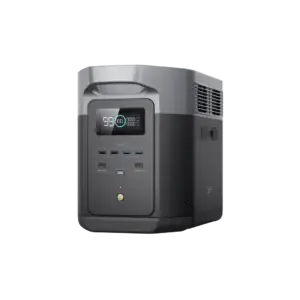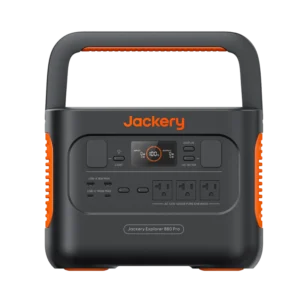
EcoFlow DELTA 2 Max powers almost all the devices you need
EcoFlow DELTA 2 Max Solar generator for your home and outdoor The EcoFlow DELTA 2 Max stands out as a powerhouse that effortlessly combines capacity,
Ever felt the frustration of running low on battery power during a trip? I’ve been there, but guess what? I’ve stumbled upon a nifty solution that keeps my devices juiced up and ready for action wherever I go!
So, my boat currently relies on two trusty lead acid batteries, but it’s time for an upgrade. I’m considering swapping out one of the batteries or even adding a third one—a LiFePO4 battery—to give my boat’s power system a serious boost.
However, it’s not as straightforward as plug-and-play. Connecting these batteries to the alternator requires a bit of finesse due to their different charging rates. It’s all about finding that clever connection to keep everything in sync.
And let’s not forget about the charger! I’m on the hunt for one that’s as versatile as it gets, capable of handling both Lead Acid and LiFePO4 batteries like a pro. It’s the key to hassle-free charging without worrying about compatibility issues.
As I navigate through these options, join me on this journey towards a seamless and worry-free power setup. It’s all about upgrading smartly for endless adventures without the battery blues!

There are numerous options and features to select from.
The optimal approach is to assess the power consumption of your electrical devices and incorporate a safety margin. A margin of approximately 80% is advisable for prudent consideration
The 3 things to look for in power station
I have written a lot of power stations here and everyone is a power station a would consider buying, read more here

EcoFlow DELTA 2 Max Solar generator for your home and outdoor The EcoFlow DELTA 2 Max stands out as a powerhouse that effortlessly combines capacity,

EcoFlow DELTA 2 Solar generator for your home and outdoor EcoFlow DELTA 2 is the solar generator for your house and when you are on

Jackery Explorer 2000 PRO Portable Power Station The Jackery Explorer 2000 Pro Solar Generator is a portable power source that is perfect for camping, hiking,
A power station can solve my problems with my boat and the electric devices that I want to have with me. The benefit with this solution is that I can bring it home to charge it and use the power station as a backup
But
It is a like buying a toothbrush
There are so many options and when you have it all figured out….
…then there is an electric option too
I am not finished with my solution for my boat but this is clever:
Electrical Parameters:
Mechanical Specifications:
This charger will charge your starter battery and your leisure battery with solar so you can leave the vehicle anywhere and know it’s fully charged when you need it.
When you are out driving the vehicle the charger will charge your leisure battery regardless witch type of battery you have. Just configure the charger for your battery type.
Inverter Specifications:
Charger Specifications:
Transfer Switch Specifications:
General Specifications:
Warranty Information:
Features:
Meet your battery’s new best friend – a charger will charge your leisure battery in no time, With an output current ranging from 5 to 65 Amps, this charger can fully charge a 100Ah battery in under 2 hours. (65A in 1 hour = 65Ah)
Now, on your trip, you’ve got a generous 2000W of electric power for all your appliances. It’s like having a slice of home wherever you go.
The inverter/charger comes with a remote control and a battery temperature sensor.
The sensor ensures the charger adapts to temperature changes, making sure your battery gets a stable and constant charge. It’s all about simplicity and reliability for your charging needs.
Electrical Specifications:
Mechanical Specifications:
Charging Parameters:
Discharging Parameters:
Temperature Parameters:
Communication:
Accessories:
Warranty:
Meet your battery’s new best friend – a charger will charge your leisure battery in no time, With an output current ranging from 5 to 65 Amps, this charger can fully charge a 100Ah battery in under 2 hours. (65A in 1 hour = 65Ah)
Now, on your trip, you’ve got a generous 2000W of electric power for all your appliances. It’s like having a slice of home wherever you go.
The inverter/charger comes with a remote control and a battery temperature sensor.
The sensor ensures the charger adapts to temperature changes, making sure your battery gets a stable and constant charge. It’s all about simplicity and reliability for your charging needs.

There is often a generous offer on the Renogy ONE Core and it helps you monitor your stored power and how the status is on your equipment
This is a solution in my opinion is for people that need to charge their power station when the sun isn’t shining and when there is no grid power available.
Charge the power station for the night and or when you need to top it up and enjoy a silent night without engine noice
EcoFlow Smart Generator (Dual Fuel) is a clever solution and operates with EcoFlow DELTA PRO
EcoFlow Smart Generator (Dual Fuel) will be delivered after Dec 25.
• Designed for easy maintenance, and as quiet as 56dB at a distance of 23ft.

How to get power outdoors with EcoFlow DELTA Pro Just take it with you and you have power to all your electrical devices. Introducing the

3 Power Stations that will make your time outdoors more convenient Power for Every Adventure and situation Imagine a power station that not only meets but

Jackery Explorer 600 Plus – Unleash Your Outdoor Adventures Unmatched Power for Every Adventure Imagine a power station that not only meets but exceeds your

Flextail ZERO PUMP – Inflate Your Outdoor Gear Effortlessly If you’re an outdoor enthusiast, you know how crucial it is to pack light and have

How to inflate your things outdoors with pump from Flextail Inflate Your Outdoor Adventures with the FLEXTAIL Tiny Pump X If you’re an outdoor enthusiast

Jackery Explorer 1000 V2 Introducing the Jackery Explorer 1000 V2 – your ultimate power companion for every adventure! Take advantage of the exclusive early bird

Jackery Explorer 300 Pro Portable Power Station Are you ready to elevate your outdoor adventures to the next level? Imagine having the power to keep

Jackery Explorer 880 Pro Portable Power Station Are you ready to level up your outdoor adventures with reliable power? Meet the Jackery Explorer 880 Pro

Anker Prime Power Bank Unleash Unmatched Power On-the-Go In a world where staying connected is non-negotiable, having a reliable power source for your devices is

Jackery Explorer 100 Power Wherever You Go! Jackery Explorer 100 Plus Introducing the Jackery Explorer 100 – your ultimate portable power companion! This mini powerhouse

Saving Energy and Earning Rewards with OhmConnect Saving energy has never been more rewarding, thanks to innovative platforms like OhmConnect. By participating in OhmHours, individuals

How to build your 12V power system in an RV with Victron This system will be perfect for an Rv or boat. First the Orion-Tr

How to build your 12V power system in an RV with Renogy To start with is the DCC50S a clever charger that will charge from
Get our Newsletter for deals and News